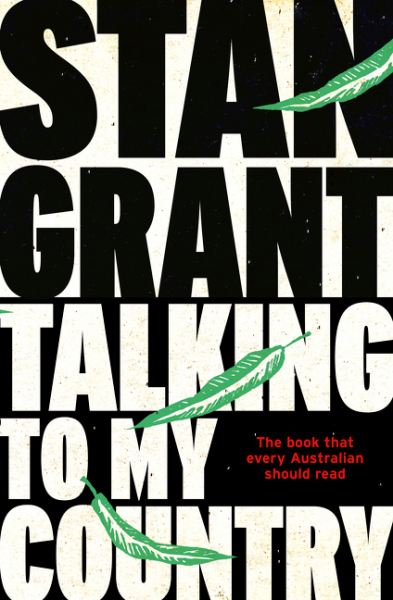 Wiradjuri heritage journalist, Stan Grant, launched his book, Talking to My Country, at the National Press Club. Details about the book are here. Guardian Australia carried extracts from the book.
Wiradjuri heritage journalist, Stan Grant, launched his book, Talking to My Country, at the National Press Club. Details about the book are here. Guardian Australia carried extracts from the book.
We know this history, my people. This is a living thing. We touch it and we wear it. It is written in the scars on the bodies of men like my father. It is carried deep within us, mental wounds that cannot heal. It is so close we can touch it.
Earlier this month, anthropologist Jim Bowler wrote again in Inside Story about the need to return the remains of Mungo Man from a museum cabinet to the lands where he roamed 40 000 years ago. (Bowler’s earlier article is here.) ‘Mungo Man is acknowledged worldwide’, writes Bowler, ‘as the centrepiece of our evidence of ancient Australia’. He then drew this telling comparison:
This year marks the centenary year of the Somme and we honour the memory of those who died on the Western Front during the first world war. It is where my father spent two harrowing years navigating duckboards and dodging shell holes in Amiens and Villers-Bretonneux. A century later, the deaths of the tens of thousands of Aboriginal men and women who died in defence of their land await their memorial occasion. The continued absence of facilities in memory of Mungo Man and all he represents pales against the $100 million Villers-Bretonneux Educational Centre Tony Abbott unveiled last year. While the honouring of our war dead is essential, what is sacred in France demands equality at home.
For more on the Villers-Bretonneux venture, search our website under the words ‘Monash’ and ‘boondoggle’.
Then there was fire. David Bowman writes in The Conversation about the lessons that modern Australia can learn from Indigenous fire management techniques. While there are different schools of thought on the burning practices followed by the First Australians. Bowman believes they followed flexible strategies (‘patch burning’), dictated by their need to live on the land they were burning. These techniques could be replicated to a considerable extent today, involving Indigenous communities in the work. ‘This could sustain and rekindle an ancient tradition that was disrupted by European settlement.’
The role of fire in pre-settler Australia has been the subject of previous ground-breaking books, Discovering Monaro by Keith Hancock and The Biggest Estate on Earth by Bill Gammage. Concluding his book, Gammage said this:
We have a continent to learn. If we are to survive, let alone feel at home, we must begin to understand our country. If we succeed, one day we might become Australian.
Understanding country seems to mean more than coming to terms with flora and fauna and the environment.
For related resources, see our earlier collection of material on Stan Grant’s racism speech and related material, our miscellany on Closing the Gap and further material on Closing the Gap.
23 February 2016